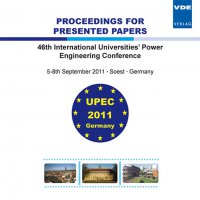Analysis of different Methods to Improve the Fuel Cell Dynamics for Modern Aircraft Applications
Conference: UPEC 2011 - 46th International Universities' Power Engineering Conference
09/05/2011 - 09/08/2011 at Soest, Germany
Proceedings: UPEC 2011
Pages: 6Language: englishTyp: PDF
Personal VDE Members are entitled to a 10% discount on this title
Authors:
Lücken, A.; Schulz, D. (Electrical Power Systems, Helmut-Schmidt-University Hamburg, Germany)
Schultze, M.; Horn, J. (Institute for Control Engineering, Helmut-Schmidt-University Hamburg, Germany)
Abstract:
An important goal of the aviation industry is the reduction of CO2 emissions. Replacement of the conventional auxiliary power unit (APU) by a multi functional fuel cell system (MFFCS) reduces the emission of carbondioxide significantly and therefore can increase the eco efficiency. However, requirements on system dynamics are higher than currently available fuel cell systems can provide. To improve the dynamics of the MFFCS especially during high peak power demands different methods are considered. This paper compares two possible methods to improve the system dynamics. The first is oversizing the fuel cell stack by solely increasing the number of cells. System oversizing is a method used for the design of conventional power supplies. For the design of a MFFCS as an alternative power supply this approach is investigated for its feasibility and extra weight. The second method for improving the system dynamics is integrating a short time energy storage. Both scenarios are compared and demonstrated by a MathWorks MATLAB simulation.


